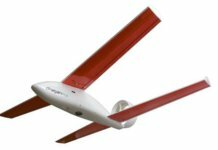With an expectedly drone-purchase-laden holiday season swiftly approaching, the Federal Aviation Administration (FAA) has formally unveiled the suggestions its task force members came up with for the agency’s plan for unmanned aircraft registration.
On Oct. 19, the FAA and Department of Transportation (DOT) first announced the initiative, which would require both hobbyist and commercial operators of small unmanned aircraft systems (UAS) to register their devices before flying in national airspace – the specifics of which would be recommended by a multidisciplinary group hand-selected by the agencies.
Having met on Nov. 3-5, the stakeholders were to “develop and recommend” three main things, according to the FAA: “minimum requirements for UAS that would need to be registered,” “registration processes” and “methods for proving registration and marking.”
First off, according to the final recommendations, UAS requiring registration would weigh between 250 g (roughly .55 lbs.) and 55 lbs. For comparison’s sake, the Parrot Bebop weighs in at 400 g, and the Tailor Toys PowerUp 3.0, a paper-airplane drone, is 19 g. (Interestingly, though, there does exist an FAA-issued commercial exemption for it.)
The registration process would take place not when the aircraft are sold but, rather, when the aircraft are to be operated by the owners, who would have only one registration number that would apply to all drones they own. In addition, registration applies to operators at least 13 years of age who are either citizens or non-citizens of the U.S.
The free, Web-based process would be run by an application programming interface to “enable custom apps to provide registry information to the database and receive registration numbers and certificates back from the database.” Users would input their name and street address, as well as, optionally, mailing and email addresses, telephone numbers and drone serial numbers – all of which would be accessed by a password and would be able to be edited easily.
Then, the users would receive a registration certificate to keep on-hand at all times when flying their aircraft. Additionally, users must attach a “readable and legible” registration number to the drones, unless they have registered the serial number. The task force also noted the importance of implementing safety education, such as the Know Before You Fly campaign.
As for users who do not comply with registration, the task force suggested that the agency come up with “a clear and proportionate penalty framework for violations.” They noted that existing penalties for a lack of registration are related to “larger nefarious schemes” such as drug trafficking and, thus, should be altered accordingly to apply to these new circumstances.
A task force member, Brandon Torres Declet, CEO of Drone as a Service company Measure, said in a release, “While serving on the task force with other leaders of the industry, we discovered it does not take much speed or weight for a drone to become lethal.”
Indeed, the FAA’s report on the recommendations offered some physics equations on the impact a drone can potentially have during a crash. In the end, it determined that the probability of a “catastrophic event” from a drone crash would be “less than 1 ground fatality for every 20,000,000 flight hours of an sUAS.”
According to the report, the task force members had varied opinions on the 250 g weight minimum and the safety risks of drones of that size, and they also “urged the FAA to expedite its work” in regards to actual safety risks of drones to manned aircraft, as well.
DJI, which was represented on the task force by Brendan Schulman, vice president of policy and legal affairs, said in a release, “We share the concerns of many of the 4,700 people who filed comments that this process was initiated in response to sensational headlines rather than data-based risk assessments and contradicts the provisions of several federal statutes.
“Nonetheless, we undertook in good faith the assignment, which was not to argue the law, but to use our expertise and knowledge as the world’s largest drone manufacturer to recommend to the administrator a national drone registration system intended to be minimally burdensome to consumers and professionals and effective at the stated goals.”
The National Association of State Aviation Officials, which was also took part in the recommendation process, says in a release, “There were unquestionably divergent views on these and other issues discussed by the group; however, the report represents consensus and compromise.” The association notes that it “presented a strong voice for the states throughout, with an emphasis on safety and education at the point of registration, and the importance of sharing registration information with state transportation and aviation offices – as specifically delineated in the final report.”
According to a statement from Michael Huerta, FAA administrator, the task force “embraced the challenge” with “energy and creativity.”
“I will work with my team at the FAA to review their recommendations, as well as public comments we received, as we present the recommendations to [DOT] Secretary Foxx. We will work quickly and flexibly to move toward the next steps for registration,” Huerta says.
The FAA notes that the recommendations are not necessarily the final rules and will incorporate them at its own discretion.
The full report can be found here.









The Commercial application’s with the use of a UAS’s is astounding, within two years this will be a major industry dedicated to safety-maintenance-training. As a full service company, our intent for the UAS will be in the trades of: gas/oil right of way leakage detection, wind turbine farm maintenance inspection, fiber optics right of way security, electrical tower right of way inspection, lake-river-waterway crossing. Therefore the sensor and camera detection and date collection portion of the drone is just as important as the registration. Anyway, I just happy to be part of this new technology and look forward to the… Read more »